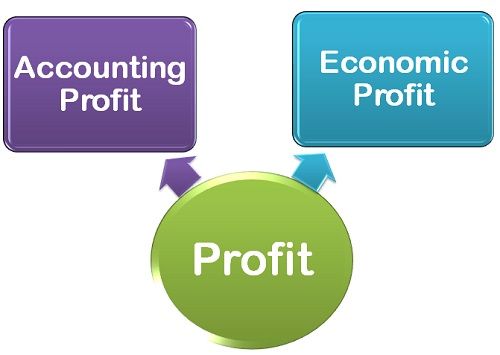Definition: Profit refers to the financial gain obtained when the revenue generated from the business operations exceed the expenses and costs incurred in carrying out the business activity.
The term “profit” imply different meanings to different people. Such as, profit is regarded as income to the equity holder, wages to the labor, rent to the owner, interest to the money lender, etc. Typically, the profits are the earnings that flow to the investors.
Types of Profit
There are two concepts of profit: Accounting Profit and Economic Profit. To understand the concept of profit more precisely, it is important to learn about the difference between these two concepts:
- Accounting Profit: In an accounting context, the excess of revenues earned overall paid costs, including manufacturing and overhead expenses, are called as profit. The accounting profit can be calculated as:
Accounting Profit = TR – (W+ R+ I+ M)
Where TR = total revenue, W = wages and salaries, R = Rent, I = Interest, M = Cost of materials.While calculating the profits, only the explicit cost or book cost, i.e. the cost recorded in the books of accounts is considered.
- Economic Profit: The economic profit differs from the accounting profit in the sense, it takes into account the implicit or imputed cost while calculating the profit of a firm. The implicit cost is called an opportunity cost. The opportunity cost is the income foregone that could be made from the use of the second best alternative. Such as, if an entrepreneur uses his capital in his own business, he foregoes the dividend which would have been earned by purchasing the shares of another company.
The economic profit is also called as a Pure Profit. The pure profit makes the provisions for depreciation, insurable risks, and necessary minimum payments to the shareholder so that they do not withdraw from the capital. Thus, pure profit is the residual left after all the contractual costs Viz. Transfer cost of management, depreciation, insurable risks, payment to shareholders, have been met.
Pure Profit = Total Revenue – (Explicit Costs + Implicit Costs)
Alternatively,
Pure profit = accounting Profit – (Opportunity Cost+ Unauthorized payments, e.g. bribes)
Thus, the major difference between these two types of profit is that the accounting profit does not take the implicit or the opportunity cost into consideration while the economic profit does.


Leave a Reply